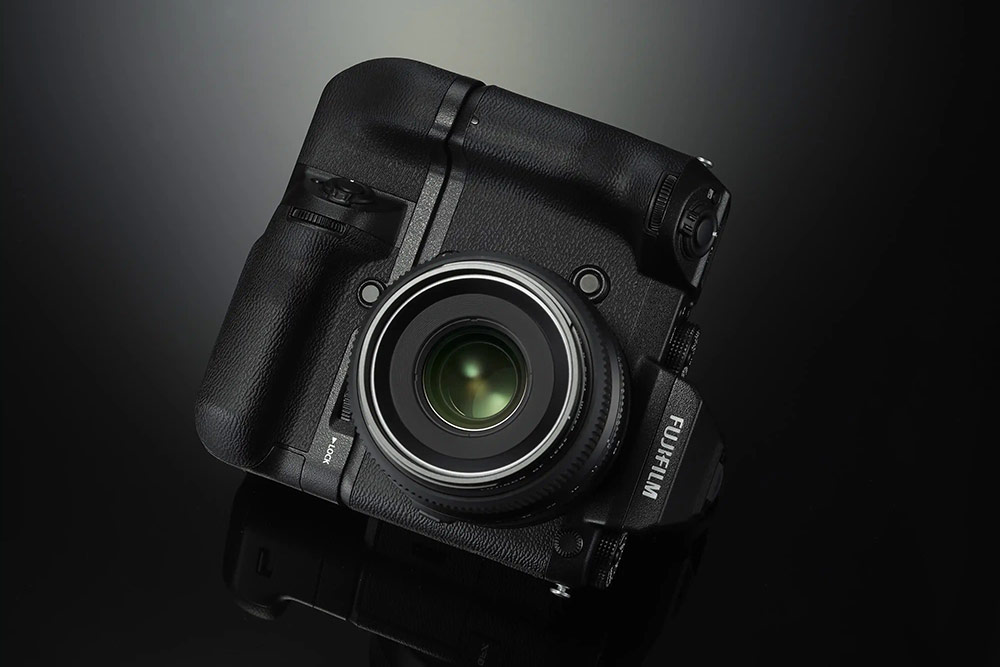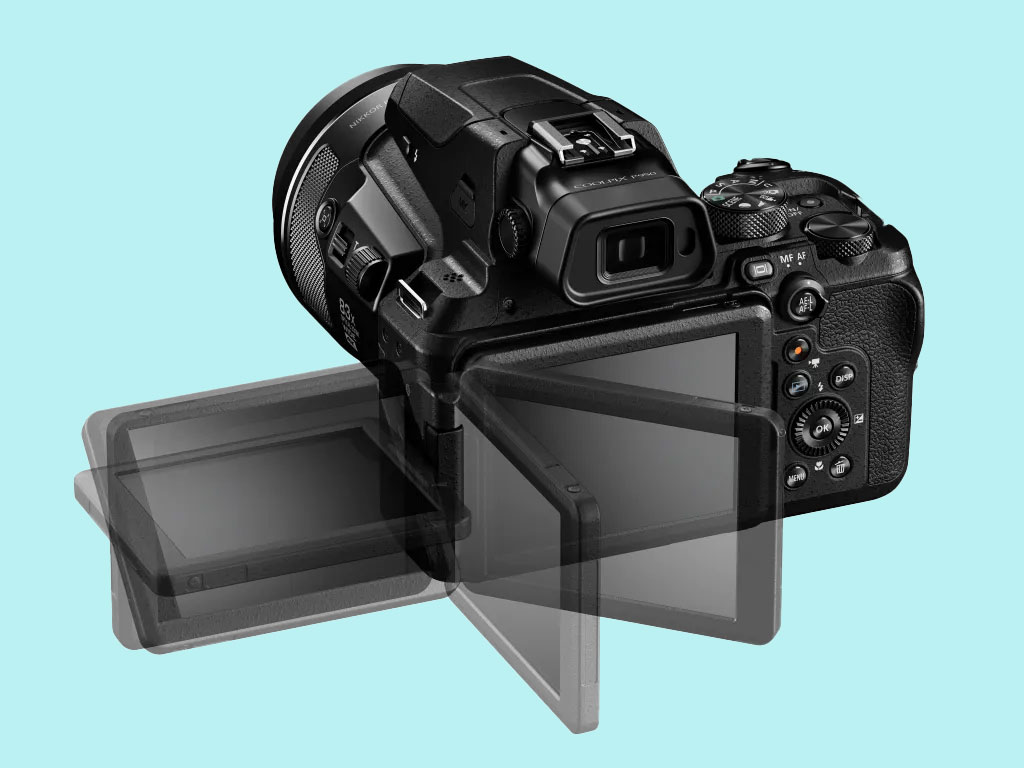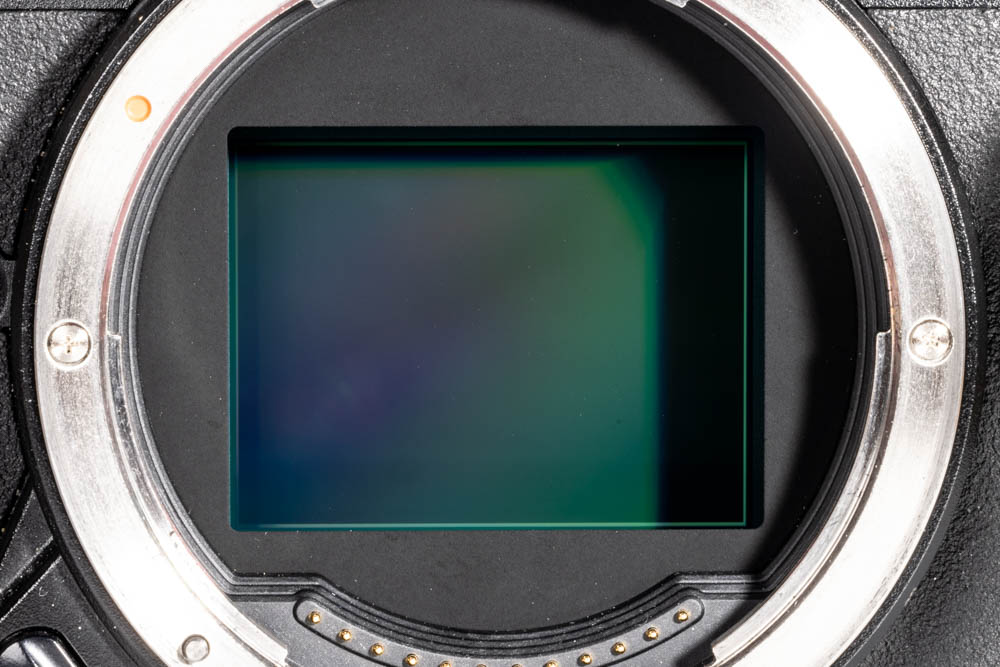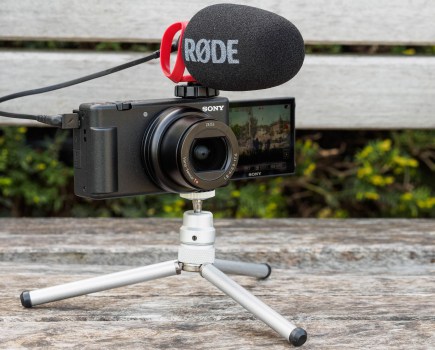Is bigger really better? When it comes to shooting quality video with your camera, it’s a tricky question. Plenty would argue in favour of full-frame, and just as many for a format like APS-C or Micro Four Thirds that will provide a better overall feature set. Will Cheung takes a closer look at how sensor size affects video, and why it is super important when choosing the best camera for video.
These days, our phones contain a device capable of shooting video pretty much everywhere. We encounter video frequently – be it Zoom calls, TikToks, YouTube or streaming TV shot on expensive cine cameras.
There are so many different devices that can record video, and most of us don’t need to consider the little imaging sensors that sit inside them. For those in the business of shooting video, though, it’s a question of real importance.
The tiny sensors inside smartphones can capture great-looking video (albeit usually with some computational help from the phone’s processor). Experienced videographers, however, understand the advantages of other camera formats for filming top-class footage. Full-frame, APS-C, Micro Four Thirds, medium format – these are all popular sensor formats. Indeed, many will use more than one, switching between them for different situations.
For more on video, check out our guides to the best cameras for recording video and vlogging, the best lenses for video, and the best video-editing software, including free tools.
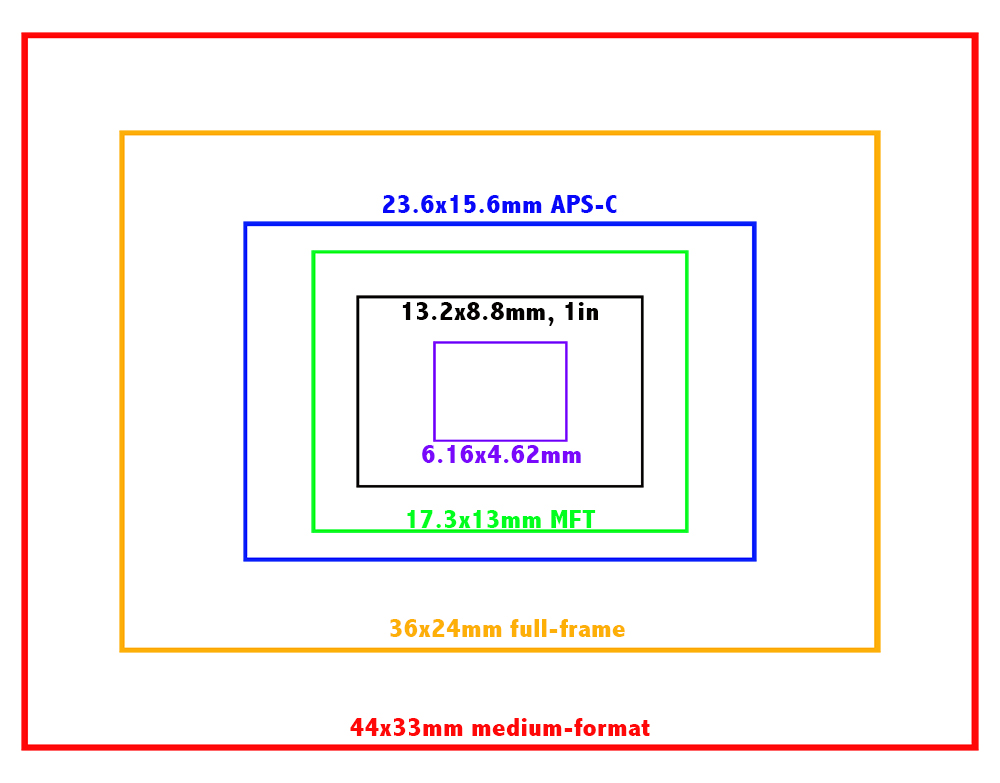
Early on, digital compact cameras had small sensors and consumer-level DSLRs were APS-C format while full-frame and medium-format digital remained the preserve of pro photographers. With time, full-frame cameras have become more affordable, especially models that have been around a while.
With budget being a potential barrier to full-frame, the smaller APS-C and Micro Four Thirds formats offer a more cash-friendly route to serious video capture and with them comes the added benefits of less weight and bulk.
Another option is medium-format: now more affordable than ever, but does that make it a good option?
That’s not to say that today’s medium-format gear is cheap – it isn’t – but thanks firstly to Pentax with its 645Z and then Fujifilm and Hasselblad, more photographers can enjoy its benefits. Fujifilm has probably been the most aggressive brand in this sector with a regular churn of new cameras and lenses. The Fujifilm GFX 50S II with standard 35-70mm zoom currently sells for $4,700 / £2,700, which is significantly less than some top-end full-frame cameras.
Sensor size – a refresher
Stills photographers and video creators have a wide choice of formats, from mobile phones and compact cameras up to full-frame and medium-format. If ultimate picture quality is a key consideration, the larger the image format the better. That said, it is remarkable what smaller formats are capable of. Many pro image creators use Micro Four Thirds, for example, with no complaints.
A nod to the world of CINE cameras: There’s a multitude of formats – with Super 35 or S35 (24×18.6mm) being one of the most widely used, plus it’s supported by lens makers.
Sensor size: lens options

The sensor size of your camera dictates which lenses you can use. Different camera systems have different lens mounts, of course. In some cases, even within the same system, there are certain lenses that are only usable on smaller sensor cameras. Sony E-mount is an example, as are Canon and Nikon’s DSLR and mirrorless ranges.
Larger sensors not only require larger camera bodies to house them, but also larger lenses to use with them, and this adds to the overall bulk of your setup. When shooting handheld all day, the weight of a medium format system will tell a lot more than would a Micro Four Thirds. The weight of the heavier system could exacerbate the effects of camera-shake, meaning you’ll need to rely more on your stabilisation system.
Of course, there are some lens-based advantages to using larger sensors. Video shooting tends to favour wider focal lengths, and these are more plentiful on full-frame systems because there’s no crop factor – i.e. a smaller image field that cuts into the effective focal length of the lens, narrowing the field of view.
Sensor size: Smartphones
Smartphones have small sensors, typically measuring 1/2.55in or 1cm across, and some higher-end models have 1/1.3in units. These are tiny in comparison to those found in mirrorless cameras. Consequently, stills image quality suffers from digital noise, and quality falls off with print enlargements beyond A4. However, phones are really convenient and easy to use – most of us don’t go anywhere without them.
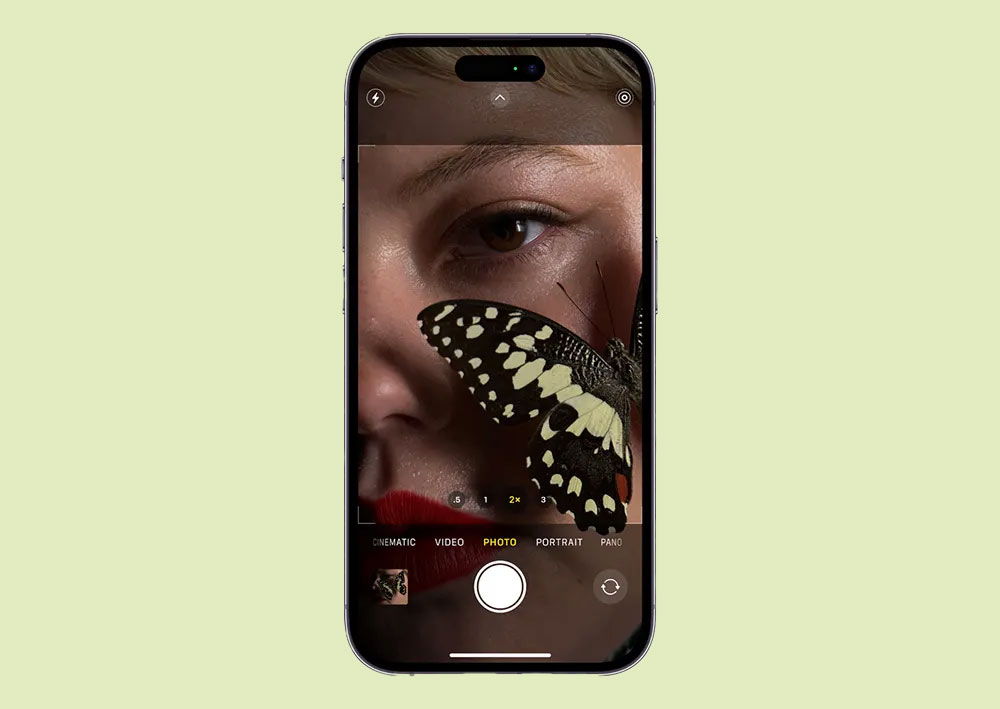
If you’re video shooting for social use, models such as the Apple iPhone 14 Pro, Google Pixel 7 Pro, Samsung Galaxy S23 Ultra and Sony Xperia Pro 1 are a portable solution and highly capable. In most cases, these have the ability to shoot wide, macro and telephoto, with powerful computational photography and in-body processing skills. The latest smartphone is a compelling option.
Sensor size: Compact cameras
Thanks to the inexorable rise of the camera phone, compact cameras are not the force they once were, but many excellent models still circulate. There are two types of compact camera: the bridge-type version based around a powerful wide-ranging zoom lens, and the classic compact with a fixed semi-wide-angle standard lens.
A popular bridge camera is the Nikon Coolpix 950, which sells at $800 / £849. It has a 83x range optical zoom giving the 35mm equivalent focal length range of 24-2000mm and is fitted with a 1/2.3in sensor (8.8×6.6mm) with a 16.7Mp resolution. A downside of such small sensors is the large amount of digital noise (grain) you get at high ISO settings, and fast speeds are needed to enable action-stopping shutter speeds with the longer telephoto settings. The high amount of digital noise severely impacts fine detail and looks unsightly.
Fixed lens compacts have larger sensors, 1in (13.2×8.8mm) or APS-C, for superior picture quality. Popular examples include the $1,565 / £1,049 Sony RX100 VII, which has a stacked 1in sensor and a 20 megapixel resolution, while the $1,998 / £1,484 Fujifilm X100V has an X-Trans CMOS 4 APS-C sensor with a 26.1 megapixels.
Sensor size: Micro Four Thirds
Micro Four Thirds or MFT is the smallest interchangeable lens camera format. It measures just 17.3 x 13mm, giving the format a 2x crop factor, compared with 35mm full-frame. This crop factor has an incredibly useful benefit for long lenses: a 300mm lens used on a MFT camera gives the equivalent view of a 600mm lens on full-frame.
We did note higher levels of digital noise at faster ISO settings due to the smaller sensor. With the latest noise-reduction software available, it’s not an issue using high ISOs for stills.
The smaller sensor size gives other benefits too: not only smaller cameras, but also smaller lenses. In-body image stabilisation is often more effective, as a smaller sensor is more easily moved than a larger one. The Olympus / OM-System range are widely considered to have some of the most effective stabilisation systems in the business, and their mirrorless cameras all use MFT sensors.
This does have a trade-off, though – the aforementioned crop factor of Micro Four Thirds may necessitate working more frequently at longer effective focal lengths. This exacerbates camera shake, making effective stabilisation more necessary.
As well as OM Digital Solutions (the name behind OM System, formerly known as Olympus Cameras), another brand that releases cameras in this format is Panasonic Lumix, a well-respected name in the video community. The 25.2 megapixel Lumix GH6 from Panasonic sells for $1,150 /£1,400 and is one of the best hybrid cameras around with an awesome array of recording options that include CINE 4K/60p, 5.7K/60p and raw formats via HDMI to an external drive.
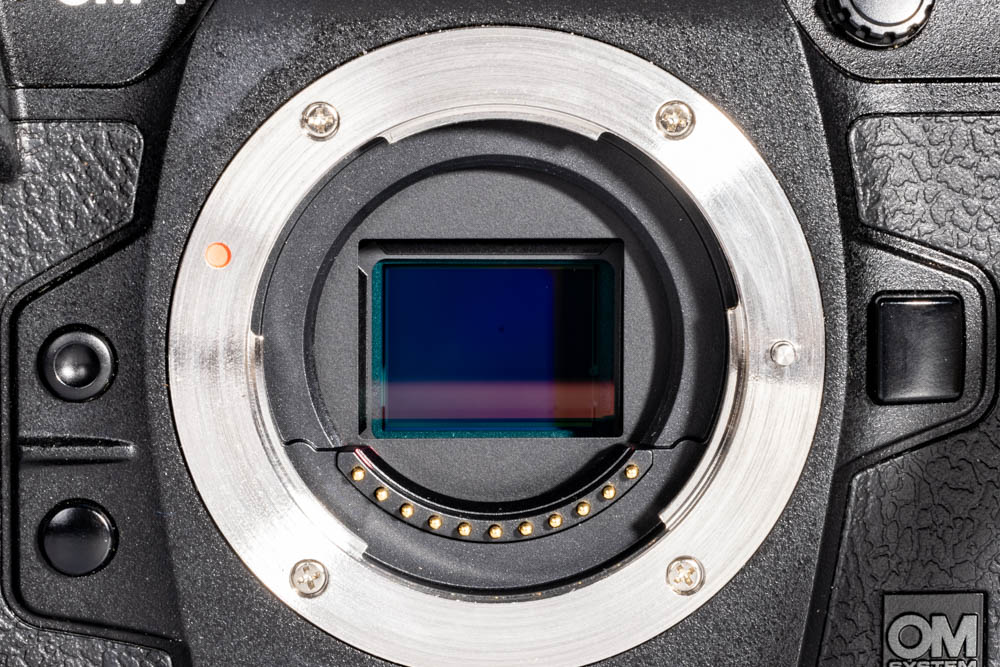
Sensor size: APS-C
The APS-C format came about with the Advanced Photo System. The APS system used 24mm wide film and you could shoot one of three formats – the whole 30.2×16.7mm frame was exposed regardless – to give prints of different ratios.
APS-C (Classic) gave a format of 25.1×16.7mm for 3:2 ratio images and that concept has stuck, although the size of the sensor does vary. Canon is typically 22.3×14.9mm, while Fujifilm is 23.5×15.6mm, Nikon 24x16mm, Pentax 23.5×15.6mm and Sony 23.6×15.6mm. In terms of crop factor, Canon APS-C cameras give 1.6x while Fujifilm, Nikon, Pentax and Sony are 1.5x, so a 100mm lens on an APS-C camera gives an equivalent 160mm or 150mm field-of-view on a full-frame camera.
Fujifilm is a leading player in this format with video. The flagship X-H2S is $2499 / £2499 body only and its stacked 26.1 megapixel sensor and super-fast X-Processor 5 enables video recording in 4K/60p, 4K/120p, 6.2K/30p and Full HD/240p with various file options including Apple ProRes support. Once again, the smaller sensor size enables highly effective in-body image stabilisation systems, with the X-H2S boasting an IBIS system that can provide up to seven stops of effective compensation.
Sensor size: full-frame (35mm)
Full-frame is the classic 36x24mm image size; it does vary very slightly depending on the brand (Nikon’s FX format is 35.9x24mm), and it’s supported by Canon, Leica, Nikon, Panasonic, Pentax and Sony camera brands and almost every lens manufacturer.
The crop factor of the 35mm full-frame format is 1.0x. This format was chosen as the crop factor reference point because it was the universally popular format, and most photographers knew the view a 24mm, 50mm or 100mm lens produced. So, saying a 12mm lens on a MFT camera gives a view like 24mm on full-frame, most camera users could appreciate the look it gave. When it comes to choosing a full-frame camera for video, you are spoilt for choice.
One of our favourites for video is the Canon EOS R6 Mark II with 4K/60p, and highly capable AI-driven subject detect AF – it’s very good value too, with the body selling at $5,399 / £1,699.
Sensor size: medium format
There are several formats that come under the medium-format banner, but for this feature, let’s say it is 44x33mm, a format supported by Fujifilm, Hasselblad and Pentax. The upside of the larger format is its incredible-quality stills.
However, a bigger body is needed to house the sensor and you then need lenses to project a big enough image circle to cover the format and this means larger optics. Also, with models using 50 or 102 megapixel sensors, file sizes are large so a powerful computer and lots of storage are essential.
The 44x33mm format crop factor is 0.79x, so a 100mm lens on this camera type will look like a 79mm lens on full-frame, i.e., it gives less of a telephoto effect. The Fujifilm GFX 100S costs $5999 / £4779 and gives 102MP stills, while for video, you can capture in 40K/30p internally. Via the HDMI port, there is also the option of 12-bit Raw. More recently, Fujifilm has announced the Fujifilm GFX100 II, which offers 8K video recording, though comes with a pretty wince-inducing price tag of $7499 / £6,999 body-only.
Which sensor size for video?
There are many factors to be considered when it comes to deciding which camera format to use for video. The obvious solution is to use whatever you own, at least to start with. However, as is often the case in modern imaging, matters aren’t necessarily straightforward and the kit and your intentions with the final results are points to consider.
If your phone or camera has been with you for a few years, its video skills might be limited to Full HD, which is 1920×1080 pixels. That is good enough for many purposes, but you may want more pixels for better image quality and greater cropping power.
Most newer cameras offer at least 4K UHD or Cinema 4K so you get 3840×2160 or 4096×2160 pixel images respectively – many more pixels and four times the number in Full HD. Indeed, such is the rate of progress in the video world, the very latest high-end cameras such as the Canon EOS R5, the Nikon Z9 and Sony Alpha A1 can record full-frame 8K, which is 7680×4320 pixels and four times the number of pixels in 4K.
If you own an 8K resolution TV you can appreciate the quality as a viewer, but shooting 8K video is demanding and at a 30fps frame rate you are recording huge amounts of data. On a Canon EOS R5, for example, shooting 8K/30p means you are shooting the equivalent of 33-megapixel resolution stills at 30fps, so you will very quickly fill the memory card and during long recording sessions, heat build-up is a potential hazard.
The 8K capable cameras mentioned previously are top-end models costing upwards of four grand, but the hardware landscape is constantly evolving and the recently introduced Fujifilm X-S20 can shoot 6.2K/30p and it is competitively priced at $1300 / £1249 for the body only.
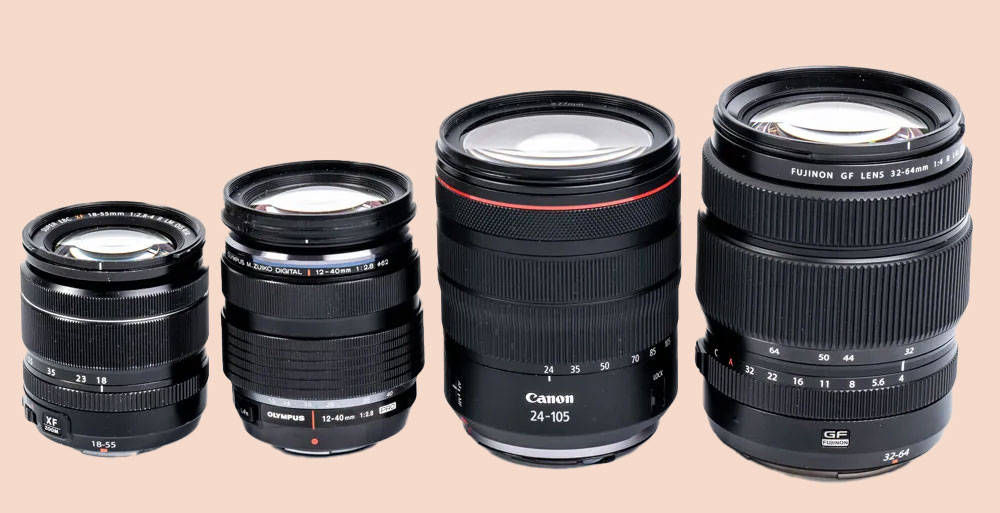
Having access to 8K and 6.2K is all very well, but you have to ask, do you need such high resolutions. Bigger files mean you can crop into footage without impacting too much on quality, but you might have to upgrade your computer and storage capacity to cope with all that data. 4K is probably the more practical proposition for most people and this resolution is on offer across the four camera formats discussed here.
When it comes to making a decision, you need to think about what you intend shooting and how the final footage will be used. If you plan to film wildlife, that means seriously long telephotos and that rules out medium-format where such lenses might not even be available – unless you buy a lens adaptor and fit a 35mm format lens and shoot cropped footage.
For family occasions, travel and vlogging, standard lenses will have the range to cover core opportunities and with IBIS (In-Body Image Stabilisation), face/eye/subject detect tracking AF shooting handheld is possible. Bear in mind, though, that shooting video is rarely done with the camera on its own. For quality sound, you need a camera-mounted microphone or a wireless system and if the light is challenging an LED light is handy, as too is a pair of headphones for sound monitoring. See our guide to the best-value audio solutions when recording video.
A monopod, tripod or gimbal are essential when you need stability. Most enthusiasts will be recording to the internal card, but there is the option of recording to an external memory device, complete with a hefty battery placed on the hot shoe and plugged into the camera’s HDMI port. See our guide to the best external camera screens for video.

The more kit you bolt onto the camera and have in the bag, the bulkier your outfit becomes. Basically, shoot video seriously and you’ll need a lot of kit and that takes up space in the bag and adds to your burden.
In this context, using a smaller format camera has more appeal because it is simply more user-friendly, which is important if you are shooting for pleasure. So, the practical side of shooting might determine which format you prefer to shoot while another factor is aesthetics.
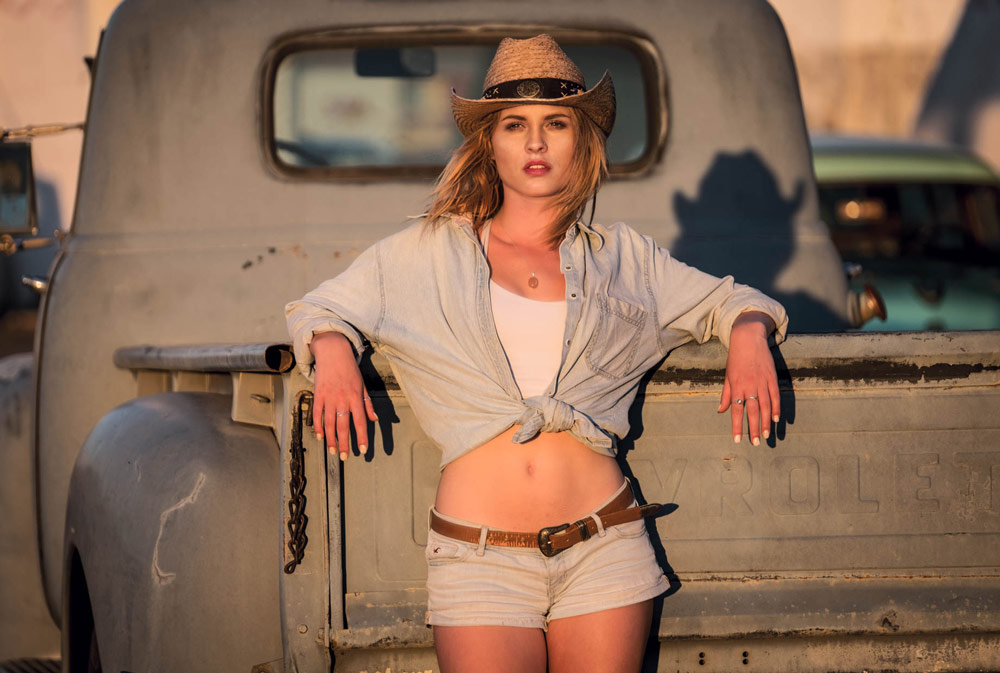
In stills, keen photographers often talk about the ‘look’ of medium-format. This is not just a reference to the clarity and super-smooth tonality, but also the amount of depth-of-field and background blur that gives a 3-D feel to pictures taken on larger sensor cameras.
But what is the reality and is that a motivation to use medium-format? The fact is that you can achieve comparable pictorial effects across the formats by a combination of lens aperture and focal length.
As an example, with the camera position and subject constant, shooting on Micro Four Thirds with a 40mm lens set to f/4 gives the same depth-of-field as an 80mm lens used at f/8 on a 35mm full-frame camera. This is called equivalency. The long and the short of it is that there’s opportunity to use shallow depth-of-field with appropriate apertures and lenses with all four formats, but that potential is greater with the larger formats.
All that said, with the computational photography features available in high-end phones and some of the latest cameras, all manner of creative effects can be achieved in-camera without the need to switch lens or adjust lens aperture.
Putting the sensors to the test
To look into the quality difference of the different formats I shot some 4K test video with a quartet of interchangeable lens cameras, one of each format: the Micro Four Thirds OM System OM-1; the APS-C Fujifilm X-S10; the 35mm full-frame Canon EOS R5; and the medium-format resolution monster, the Fujifilm GFX 100S. Each camera was mounted in turn on a tripod and 4K footage was shot at the highest frame rate of each camera.
Playing the recordings on a 4K 27in monitor showed that they were all very good. There was some white-balance variations in the out-of-camera footage but that can be sorted in editing. Get granular and the very fine lines on the chart were more clearly defined as format size increased, but this is only noticeable by taking time and looking closely. In the real world you’re not shooting test charts, and the colour, tonality and resolution of all four formats was excellent at normal viewing subjects.
In summary: does sensor size matter for video?
The short answer is probably not. Much of this is due to how we consume video. We watch videos for the experience, or to learn from the content, not to scrutinise technical quality. With stills, content is obviously important, but we are much more likely to dig into an image’s technical qualities.
Then there are the practical considerations. Medium-format is more affordable than ever, but it remains a significant investment and it’s bulky, and the depth of supporting lenses, particularly telephotos, isn’t there. That is not an issue with the smaller formats, and the quality of video output from these cameras is remarkably good and impressive enough for pro use. What’s more, their more compact stature makes shooting more enjoyable.
If you are setting up a video outfit from scratch and choosing between Micro Four Thirds, APS-C and full-frame, you’re unlikely to be disappointed whichever you decide on. You need to carefully check out the video spec of the cameras within your budget, as well as the lenses available. A great start would be a camera that can shoot uncropped 4K/50p or 60p, equipped with separate microphone and headphone ports, and fitted with a good in-body image stabilisation.
Going for a camera with more advanced recording options such as raw via HDMI might not seem worthwhile right now, but it offers future-proofing as your skills develop, and that is a good thing.
Further reading
The best cameras for video, vlogging and videography
The best lenses for recording video
Best video-editing software, including free tools
Best-value audio accessories for video
Best external camera screens for video


